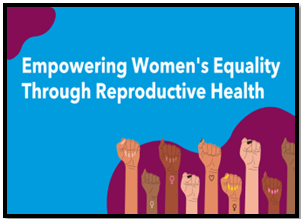“THE IMPACT OF CONTROLLING INTIMATE PARTNER VIOLENCE ON WOMEN’S SEXUAL AND REPRODUCTIVE HEALTH”
Syllabus:
- GS-3 : Women and related issues ,Present day issues and solutions , Advancement in the field of health
Focus :
- The focus of the article is on the correlation between intimate partner violence (IPV), controlling behaviors by husbands, and the increased prevalence of sexually transmitted infections (STI) and reproductive tract infections (RTI) among Indian women, based on data from the National Family Health Survey-5. The study underscores the need for policy interventions to enhance women’s autonomy and health.
Source-TH
Prevalence of STI/RTI Among Indian Women
- Statistics: One in nearly every 12 married women aged 15-49 years in India reported experiencing at least one STI or RTI over a period of one year.
- Detection Methods: Women who were sexually active were asked about their experience with diseases contracted through sexual contact, abnormal genital discharge, and genital sores or ulcers in the 12 months preceding the survey.
- General Findings: The study indicates a strong correlation between experiencing IPV and higher rates of STI/RTI.
Sexual Autonomy and Its Impact
- Sexual Autonomy Defined: The study assessed sexual autonomy through questions related to a wife’s right to ask for condom use if she knows her husband has an STI, her right to refuse sex if her husband has other sexual partners, and her ability to say no to sex when she does not want it.
- Statistics: The study found that 73% of women reported having sexual autonomy, while 31% had faced IPV.
- Impact on Health: Women with no sexual autonomy and those exposed to IPV were found to be 2.3 times more likely to have STI/RTI than those with sexual autonomy who were not exposed to IPV.
Controlling Attitudes of Husbands
- Controlling Behavior: Controlling attitudes included jealousy if the wife talked to other men, frequent accusations of infidelity, restrictions on meeting female friends, limiting contact with her family, insisting on knowing her whereabouts, and distrust with money.
- Statistics: 46% of women in the sample reported facing controlling attitudes from their husbands.
- Health Impact: Women exposed to controlling behaviors were over twice as likely to have RTI compared to those who did not face such control. The prevalence of STI/RTI was 15.9% among women who faced controlling attitudes compared to 9.4% who did not.
Correlation Between Sexual Autonomy, Physical Mobility, and Health
- Sexual Autonomy and Mobility: Women with sexual autonomy and freedom of physical mobility were 24% less likely to experience RTI compared to those without such freedoms.
- Household Decision-Making: Women with decision-making autonomy had a 36% lower likelihood of RTI. This includes the ability to make decisions about their own healthcare, make large household purchases, and visit family or relatives.
- Sociodemographic Factors: Even after controlling for sociodemographic factors, women with sexual autonomy had a 12% lower likelihood of having STI/RTI than those without it.
Sexually Transmitted Diseases:
|
Age and Prevalence of STI/RTI
- Age Groups: The prevalence of STI/RTI was higher among younger women aged 15-24 years (13%) and 25-34 years (13.2%) compared to older women aged 35-49 years (11.6%).
- Implications: Younger women are at a higher risk, highlighting the need for targeted interventions in these age groups.
Policy Implications and Recommendations
- Policy-Level Interventions: The study calls for measures to prevent child marriage and domestic violence, change regressive social norms, and promote women’s decision-making abilities and freedom of movement.
- Education and Awareness: Increasing awareness about the importance of sexual autonomy and the detrimental effects of IPV and controlling behaviors on women’s health.
- Healthcare Access: Improving access to healthcare services for women to diagnose and treat STI/RTI effectively.
- Legal Reforms: Strengthening legal frameworks to protect women from IPV and ensure their rights to sexual and reproductive health.
Source:The Hindu
Mains Practice Question :
GS-1
“Discuss the impact of intimate partner violence and controlling behaviors by husbands on the prevalence of sexually transmitted infections and reproductive tract infections among women in India. Suggest policy measures to address these issues and improve women’s sexual and reproductive health.” (250 words)




